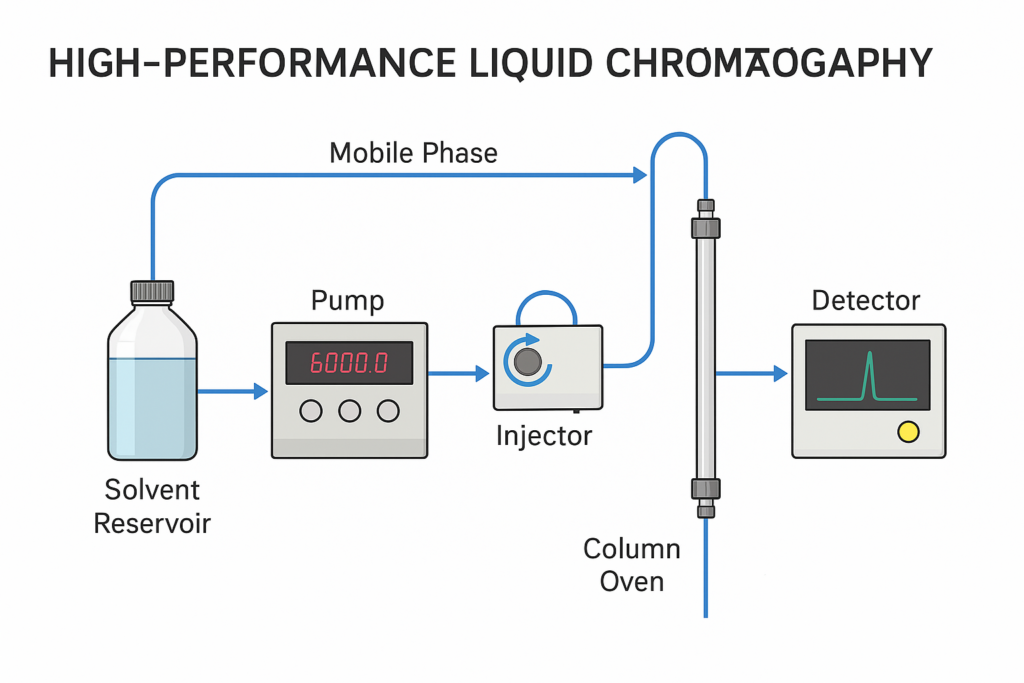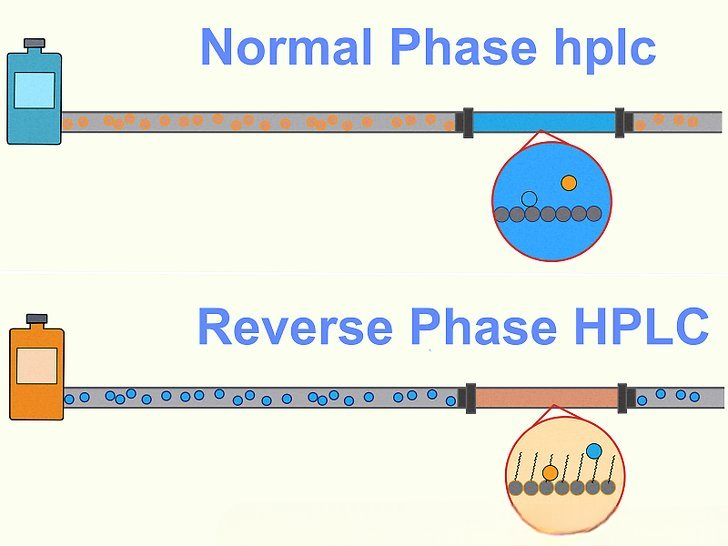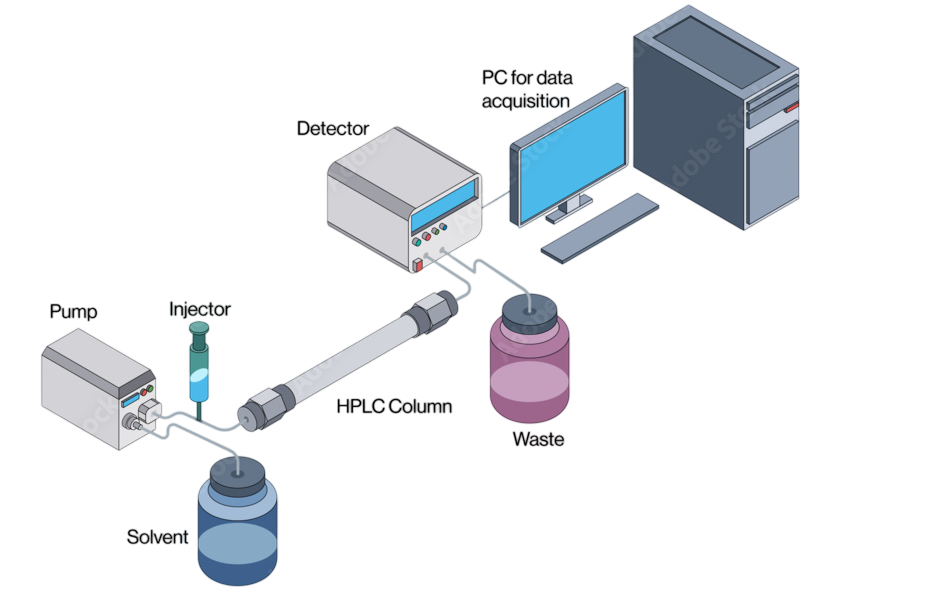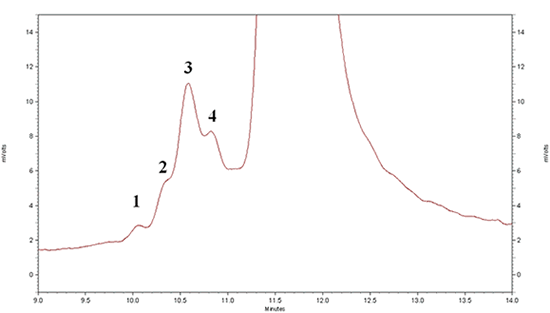What is HPLC in chemistry? HPLC stands for High-Performance Liquid Chromatography, a highly effective technique used for separating, identifying, and quantifying chemical compounds in complex mixtures. It is a cornerstone of analytical chemistry and plays a pivotal role in pharmaceuticals, food analysis, environmental monitoring, and biochemical research.
In this article, we will cover what is HPLC, its full form, principle, instrumentation, the purpose of an HPLC test, how to interpret an HPLC chromatogram, and more.

What is HPLC?
HPLC, or High-Performance Liquid Chromatography, is a form of liquid chromatography that uses high-pressure pumps to pass a liquid solvent (mobile phase) containing the sample mixture through a column filled with a solid adsorbent material (stationary phase). Each compound in the sample interacts differently with the stationary phase, causing it to elute (exit) the column at different times. This difference in retention time allows for the separation and analysis of components.
HPLC Full Form
The full form of HPLC is High-Performance Liquid Chromatography. It was previously known as High-Pressure Liquid Chromatography, but the term was updated to reflect advances in column technology that allow high performance even at moderate pressures.
What is HPLC in Chemistry?
In chemistry, HPLC is an essential analytical method used to analyze compounds in liquid samples. It offers precise quantification and clear separation of compounds, making it widely applicable in:
- Pharmaceutical analysis for drug purity and content
- Chemical research for compound identification
- Environmental testing for detecting contaminants
- Food safety for analyzing additives and preservatives
The technique is known for its accuracy, sensitivity, and versatility, making it a go-to tool for both routine testing and advanced research.
HPLC Principle
The principle of HPLC is based on the differential partitioning of compounds between the mobile phase and the stationary phase. As the sample flows through the column:

- Compounds with higher affinity to the stationary phase move slower.
- Compounds with less interaction move faster and elute earlier.
This separation is influenced by factors like polarity, molecular weight, and column chemistry.
Different types of HPLC—such as reverse phase HPLC, normal phase HPLC, and ion exchange chromatography—exploit different interactions to achieve optimal separation.
HPLC Instrumentation
An HPLC system consists of several key components that work together to perform the analysis:

- Solvent Reservoirs: Hold the mobile phase (solvent).
- Pump: Delivers the mobile phase at high pressure (up to 6000 psi).
- Injector: Introduces the liquid sample into the mobile phase stream.
- Column: The separation unit filled with stationary phase material (e.g., silica-based particles).
- Detector: Identifies and quantifies compounds (common types include UV, PDA, RI, and MS).
- Data System (Software): Records and interprets the detector signals.
Each component must work in harmony to ensure accurate, reproducible results.

HPLC Chromatogram
An HPLC chromatogram is the output graph generated by the detector. It displays:
- Retention time on the x-axis (how long each compound takes to elute).
- Detector response (usually absorbance) on the y-axis.
Each peak represents a different compound. The area under the peak correlates with the concentration of that compound, making the chromatogram a key tool for both qualitative and quantitative analysis.
HPLC Test: What Does It Do?
An HPLC test is performed to analyze the content and purity of a sample. In the pharmaceutical industry, for example, it’s used to:
- Confirm active pharmaceutical ingredient (API) content
- Identify impurities and degradation products
- Validate formulation consistency
- Monitor stability over time
The HPLC test is also widely used in food testing, clinical labs, and environmental monitoring.
Applications of HPLC
HPLC is incredibly versatile, with applications across many scientific domains:
- Pharmaceuticals: Drug development, quality control, and stability testing
- Biotechnology: Protein and peptide analysis
- Environmental Science: Detection of pollutants in air, water, and soil
- Food & Beverage: Detection of additives, preservatives, and nutritional content
- Forensics: Identification of toxins, drugs, and other chemical evidence
Conclusion
To answer the question, it is a powerful, high-resolution analytical technique that enables scientists to separate, identify, and quantify chemical compounds with precision. From understanding the HPLC principle to interpreting an HPLC chromatogram, this method has revolutionized how chemists and analysts approach chemical analysis in virtually every industry.
